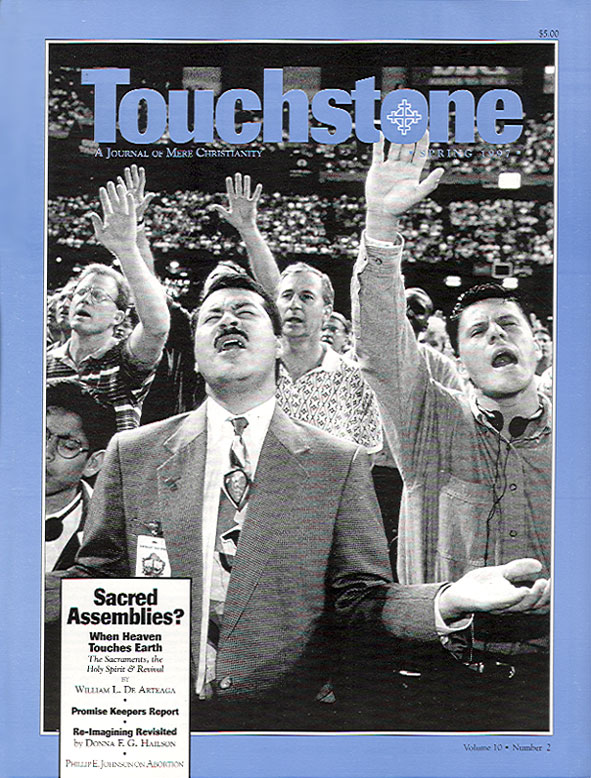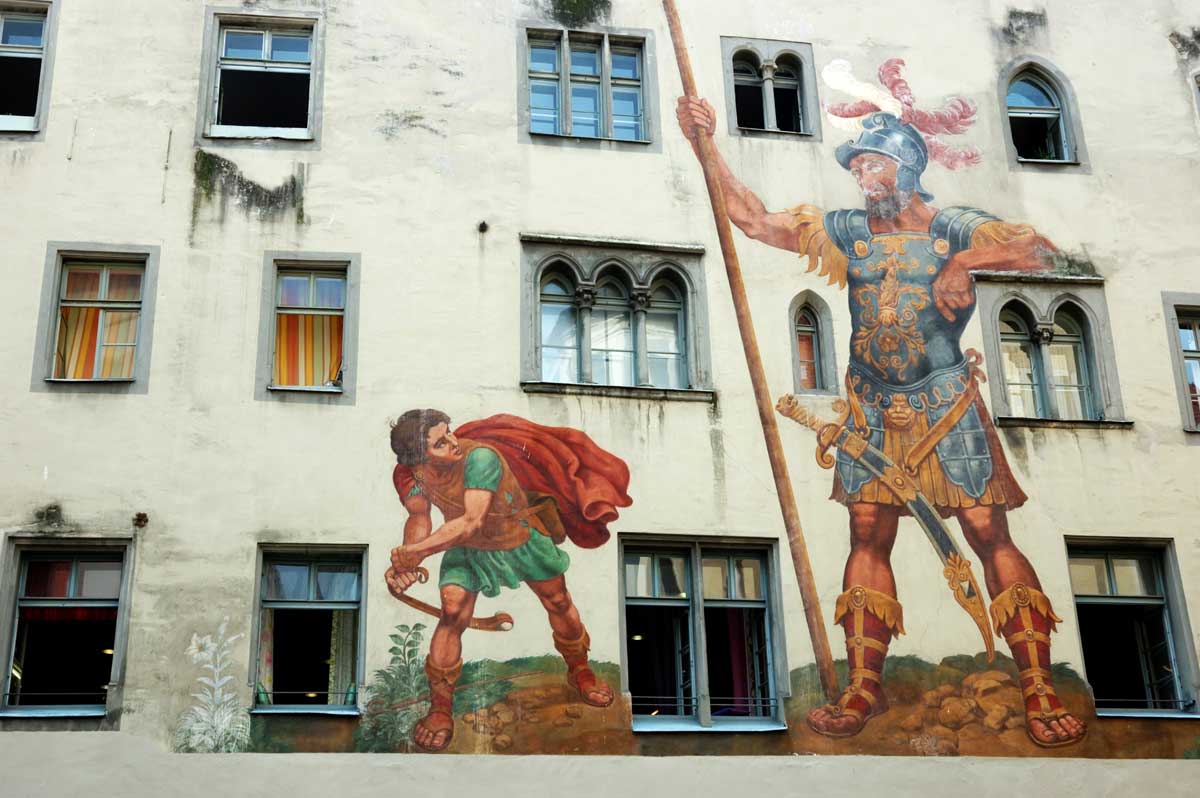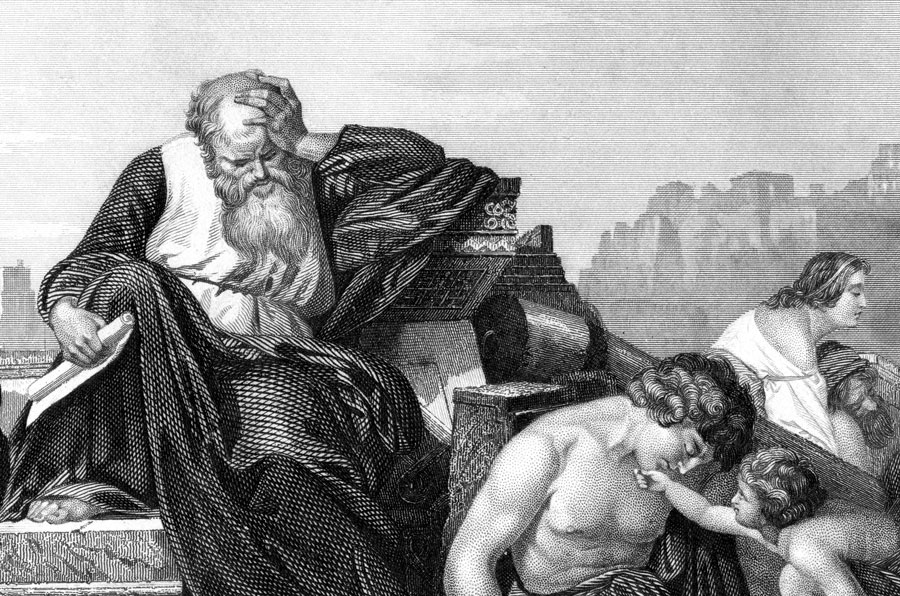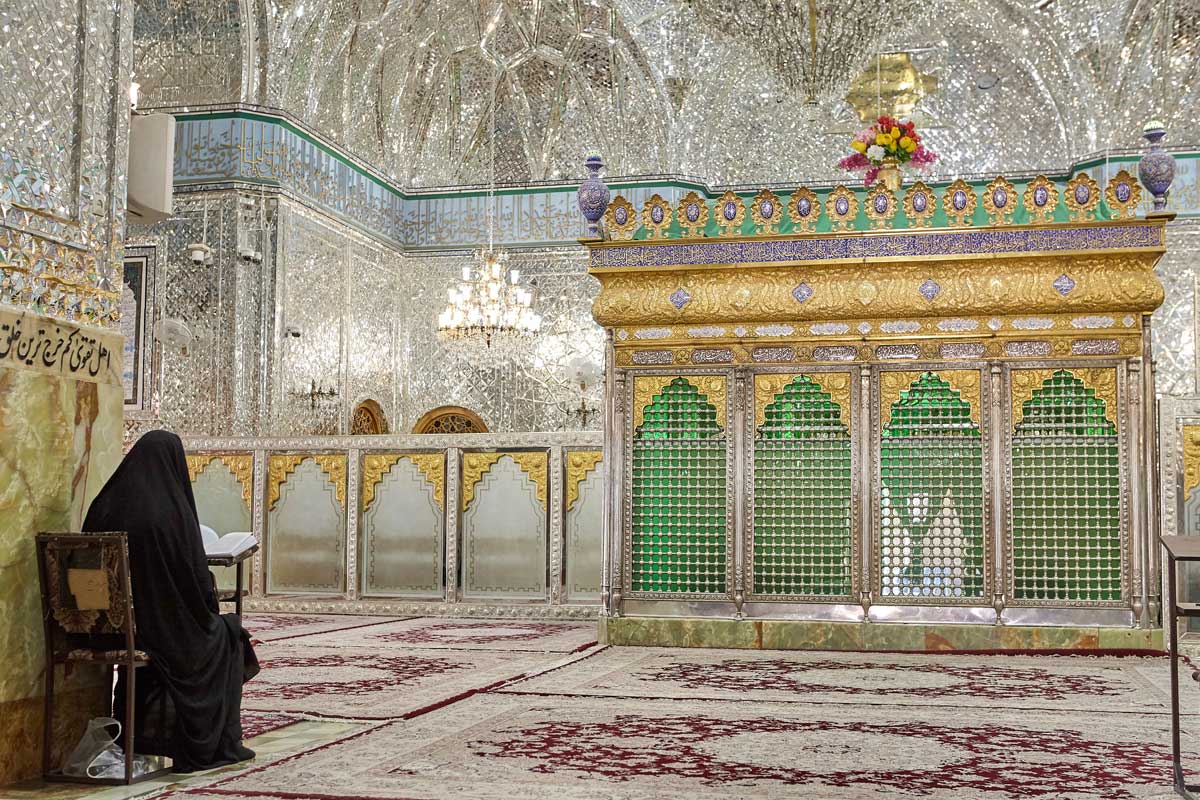Re-Imagining Revisited
“Bless Sophia, Dream the Vision, Share the Wisdom Dwelling Deep Within”
by Donna F. G. Hailson
To the sound of gathering chants, pounding drums, rainsticks and tambourines, nearly 700 women and men entered the Minneapolis Convention Center on November 1–2, 1996, for the purpose of “Naming, Claiming and Re-Imagining Power.” This re-imagining was to be developed, over the course of the weekend, under the themes of “Embodied Spirituality” (exploring and celebrating the power of women’s sexuality); “Welcomed Differences” (developing collaborative relationships across racial and class lines) and “Ecclesial Subversion” (brainstorming ways of overturning what Re-Imaginers perceive as the patriarchy that is the institutional church).
Those who gathered represented a still-alive community whose emergence with a controversial conference in November 1993 caught much of the Church off guard with its radical feminist challenge to historic Christian traditions. The idea for the first event came from the Women’s Ministry Unit of the Presbyterian Church USA (PCUSA) and its desire to promote the World Council of Churches’ Ecumenical Decade: Churches in Solidarity with Women. The largest amount of financial support for the first conference came from PCUSA, but 24 other organizations also contributed. Among these were the United Methodist Churches, the Evangelical Lutheran Church of America, the American Baptist Churches/USA, the United Church of Christ, and four religious communities of Roman Catholics. Attendees, as well, came from across the denominational spectrum. The conference subsequently made headlines in publications across the country. Re-Imagining was labeled by the more conservative members of the church as “unorthodox,”1 “reckless”2 and “heretical.”3
The General Assembly of the PCUSA reportedly received more “overtures of protest over Re-Imagining than on any other topic in the denomination’s 200-plus-year history.” Re-Imagining was said to have “awakened various mainline denominations to a state of crisis in theology, and with it the need, in the words of the [PCUSA’s] Wichita general assembly, to assert that ‘theology matters.’”4 Damage control measures were instituted by denominational officials who sought to distance themselves from the more bold and blatant statements and activities attributed to leaders and participants.
Braving the aftershocks and—perhaps—spurred on by them, some of the conference organizers banded together to create the Re-Imagining Community that was incorporated as a non-profit organization in September 1994. Today, the group operates out of offices in Minneapolis, sponsors annual gatherings and “Faith Labs” (for theological exploration), periodically publishes a newsletter and identifies itself as an ecumenical, global community that examines faith issues from mujerista, womanist and feminist perspectives. The group claims to give voice to those “who are called to discipleship but who have been denied full participation by the institutional church.” Further, the community identifies itself as one that “works to challenge the system of patriarchy . . . resists absolutist viewpoints that deny the ongoing revelation of God . . . [and] celebrates the God of history who comes to us in many images with many names as demonstrated throughout scripture, the traditions, and our imaginations.”5 Funding comes from membership fees and contributions.
At the request of the leadership of the American Baptist Evangelicals, I attended the most recent conference to get a sense of the phenomenon that is Re-Imagining. Why are so many women—and men—within the Church turning up this avenue? What is the purpose of Re-Imagining? Why has it appeared at this moment in time and how much is the institutional Church to blame for its appearance? How unorthodox is the theology of Re-Imagining and how should the institutional Church respond to the issues being raised by community members?
The Space
Let us begin with a sense of the space because space is key in understanding the theological foundations of Re-Imagining.
Conference participants were welcomed into and assured of “safe space” within which to dream and share and question. At the center of the room was a rectangular stage from which was directed all of the conference activities: “holy play”; round-table discussions; music and movement. Hanging from the ceiling over the stage were seven painted sheets. Four of these offered artist Susan Smith’s representations of the four elements: earth, air, fire and water. The other three sheets depicted conference themes: eros, the corporate sin of white racism, and ecclesial subversion. In the first of these latter three, Smith depicted Eve embracing the snake. In so doing, she explained, Eve “evokes her erotic and creative powers.” In the second, white racism was “symbolized by a burning cross, a broken apple, and a figure whose eyes are masked by hands. The tears of God flow from above, becoming apple seeds below.” In the third, Eve was presented “freely and eagerly eat(ing) the apple symbolizing her way into freedom, choice and knowledge.”
Clustered around the stage were nearly 70 round tables: “round-table churches.” Those seated at these tables were said to be members of “talking circles.” The idea obviously intended here was that in the round, there is no “head” of the table; there is no leader; there are no ranks. All are equal. All have a voice.
subscription options
Order
Print/Online Subscription

Get six issues (one year) of Touchstone PLUS full online access including pdf downloads for only $39.95. That's only $3.34 per month!
Order
Online Only
Subscription

Get a one-year full-access subscription to the Touchstone online archives for only $19.95. That's only $1.66 per month!
bulk subscriptions
Order Touchstone subscriptions in bulk and save $10 per sub! Each subscription includes 6 issues of Touchstone plus full online access to touchstonemag.com—including archives, videos, and pdf downloads of recent issues for only $29.95 each! Great for churches or study groups.
Transactions will be processed on a secure server.
more from the online archives
calling all readers
Please Donate
"There are magazines worth reading but few worth saving . . . Touchstone is just such a magazine."
—Alice von Hildebrand
"Here we do not concede one square millimeter of territory to falsehood, folly, contemporary sentimentality, or fashion. We speak the truth, and let God be our judge. . . . Touchstone is the one committedly Christian conservative journal."
—Anthony Esolen, Touchstone senior editor









